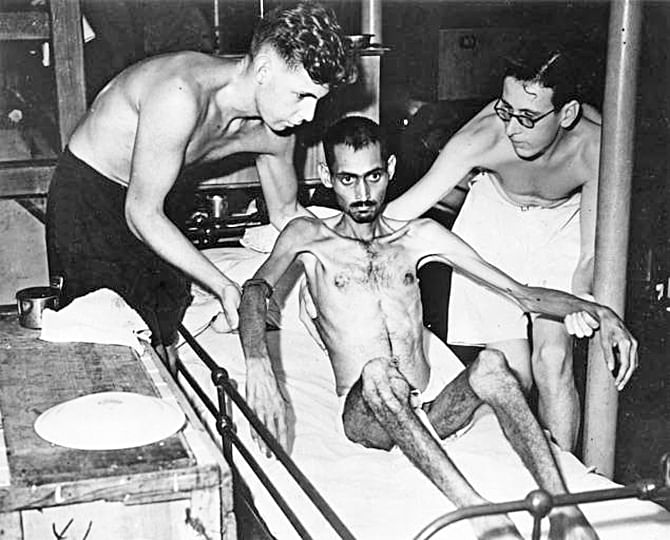Japanese ate Indian PoWs
Japanese ate Indian PoWs

On April 2, 1946, the Reuters correspondent in Melbourne, Australia, cabled a short message, which was carried by all newspapers a day later, including The Times of India. It read: "The Japanese Lieutenant Hisata Tomiyasu found guilty of the murder of 14 Indian soldiers and of cannibalism at Wewak (New Guinea) in 1944 has been sentenced to death by hanging, it is learned from Rabaul."
After the fall of Singapore on February 15, 1942, 40,000 men of the Indian Army became prisoners of war (PoWs). Some 30,000 of them joined the Indian National Army (INA), supported by the Japanese Empire. But those who refused were destined for torture in the Japanese concentration camps. They were first sent to transit camps in Batavia (now Djakarta) and Surabaya from where they were packed off to New Guinea, New Britain, and Bougainvillea.
At the camps, they faced inhuman brutalities. Apart from innovative savage tortures, they were used as live targets for new Japanese infantry recruits to improve their marksmanship. Soldiers who were not killed in the firing but wounded were bayoneted to death.
But the most spine-chilling of all Japanese atrocities was their practice of cannibalism. One of the first to level charges of cannibalism against the Japanese was Jemadar Abdul Latif of 4/9 Jat Regiment of the Indian Army, a VCO who was rescued by the Australians at Sepik Bay in 1945. He alleged that not just Indian PoWs but even locals in New Guinea were killed and eaten by the Japanese. "At the village of Suaid, a Japanese medical officer periodically visited the Indian compound and selected each time the healthiest men. These men were taken away ostensibly for carrying out duties, but they never reappeared," the Melbourne correspondent of The Times, London, cabled this version of Jemadar Latif on November 5, 1946.
Latif's charges were buttressed by Captain R U Pirzai and Subedar Dr Gurcharan Singh. "Of 300 men who went to Wewak with me, only 50 got out. Nineteen were eaten. A Jap doctor —Lieutenant Tumisa, formed a party of three or four men and would send an Indian outside the camp for something. The Japs immediately would kill him and eat the flesh from his body. The liver, muscles from the buttocks, thighs, legs, and arms would be cut off and cooked," Captain Pirzai told Australian daily The Courier-Mail in a report dated August 25, 1945.
Then there were more similar testimonies by PoWs interned in other camps, such as Havildar Changdi Ram and Lance Naik Hatam Ali, who also gave details of cannibalism practised in their camps.
All these soldiers gave sworn testimonies to the war crimes investigation commissions set up by the Allies, based on which several Japanese officers and men were tried. The senior-most Japanese officer found guilty of cannibalism and hanged was Lieutenant General Yoshio Tachibana. The Japanese, though, were always dismissive of these charges.